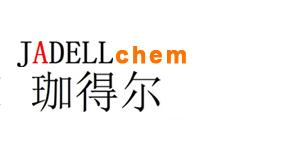Recombinant Human Granulocyte Colony Stimulating Factor是调节嗜中性粒细胞生成的多肽生长因子。
Synonyms
rHuG-CSF; CSF-3; MGI-1G; Pluripoietin; Molgramostin; Sargramostim
Species
HumanSource
E. coli Accession
P09919 Gene ID
1440 Molecular Weight
Approximately 18.8 kDa AA Sequence
MTPLGPASSL PQSFLLKCLE QVRKIQGDGA ALQEKLCATY KLCHPEELVL LGHSLGIPWA PLSSCPSQAL QLAGCLSQLH SGLFLYQGLL QALEGISPEL GPTLDTLQLD VADFATTIWQ QMEELGMAPA LQPTQGAMPA FASAFQRRAG GVLVASHLQS FLEVSYRVLR HLAQP Biological Activity
The ED50 is <0.1 ng/mL as measured by M-NFS-60 cells, corresponding to a specific activity of >1.0 × 107 units/mg. Appearance
Lyophilized powder. Formulation
Lyophilized after extensive dialysis against 25 mM Tris, pH 8.0. Endotoxin Level
<0.2 EU/μg, determined by LAL method. Reconstitution
Reconstitute the lyophilized recombinant Human Granulocyte Colony Stimulating Factor (rHuG-CSF) to 100 µg/mL using ddH2O. Storage & Stability
Lyophilized recombinant Human Granulocyte Colony Stimulating Factor (rHuG-CSF) is stored at -20°C. After reconstitution, it is stable at 4°C for 2 weeks or -20°C for longer. It is recommended to freeze aliquots at -20°C or -80°C for extended storage. Shipping
Room temperature in continental US; may vary elsewhere. Background
Granulocyte Colony Stimulating Factor (G-CSF) is a cytokine that normally acts in the bone marrow microenvironment to stimulate blood cell formation. It selectively promotes growth and maturation of neutrophil progenitor cells. Granulocyte Colony Stimulating Factor receptors are present on precursor cells in the bone marrow. By binding to these receptors, Granulocyte Colony Stimulating Factor initiates proliferation and differentiation into mature granulocytes, and also stimulates bone marrow cell release into the circulation. In addition to growth promotion, Granulocyte Colony Stimulating Factor also effects phagocytosis, motility, bactericidal activity and surface molecule expression of neutrophils and monocytes[1][2]. G-CSF production is induced by several inflammatory stimuli that become rapidly elevated during infection such as interleukin-1β (IL-1β), tumor necrosis factor-alpha (TNFα) and lipopolysaccaride (LPS). Therefore, pathogen-mediated activation of host pattern recognition receptors via LPS, and the host cytokine response to infection, serve to induce circulating levels of G-CSF[3]. |



